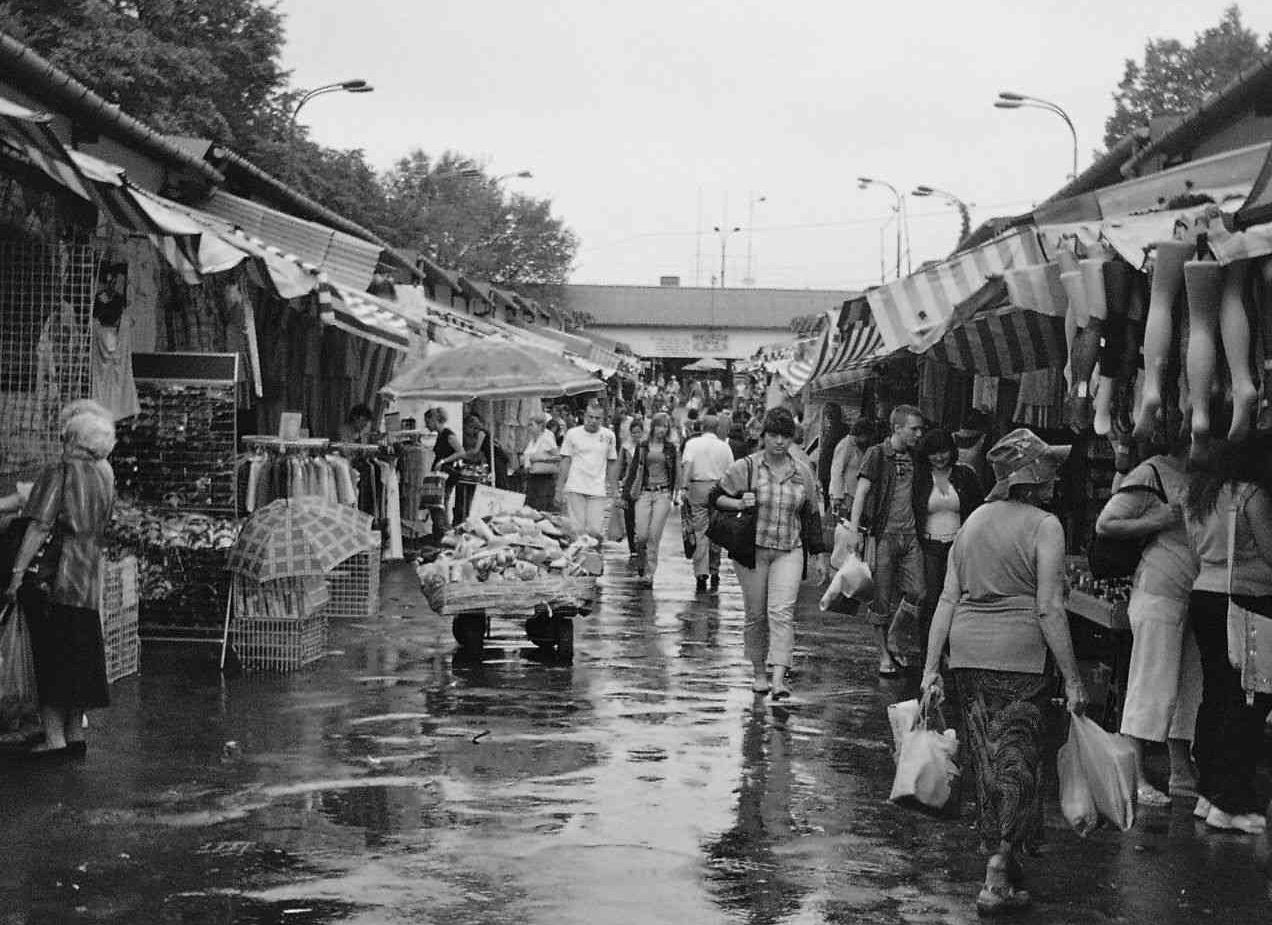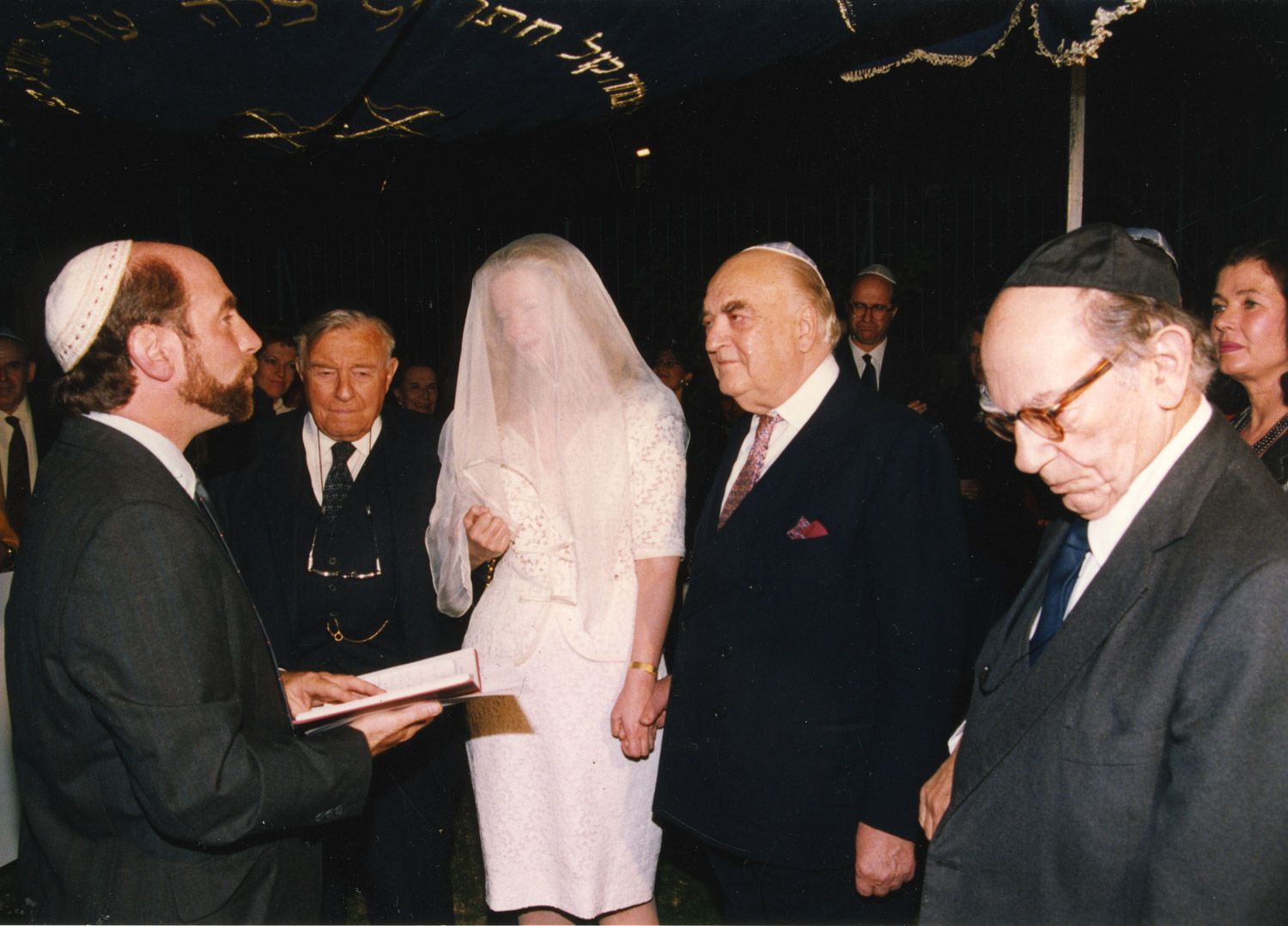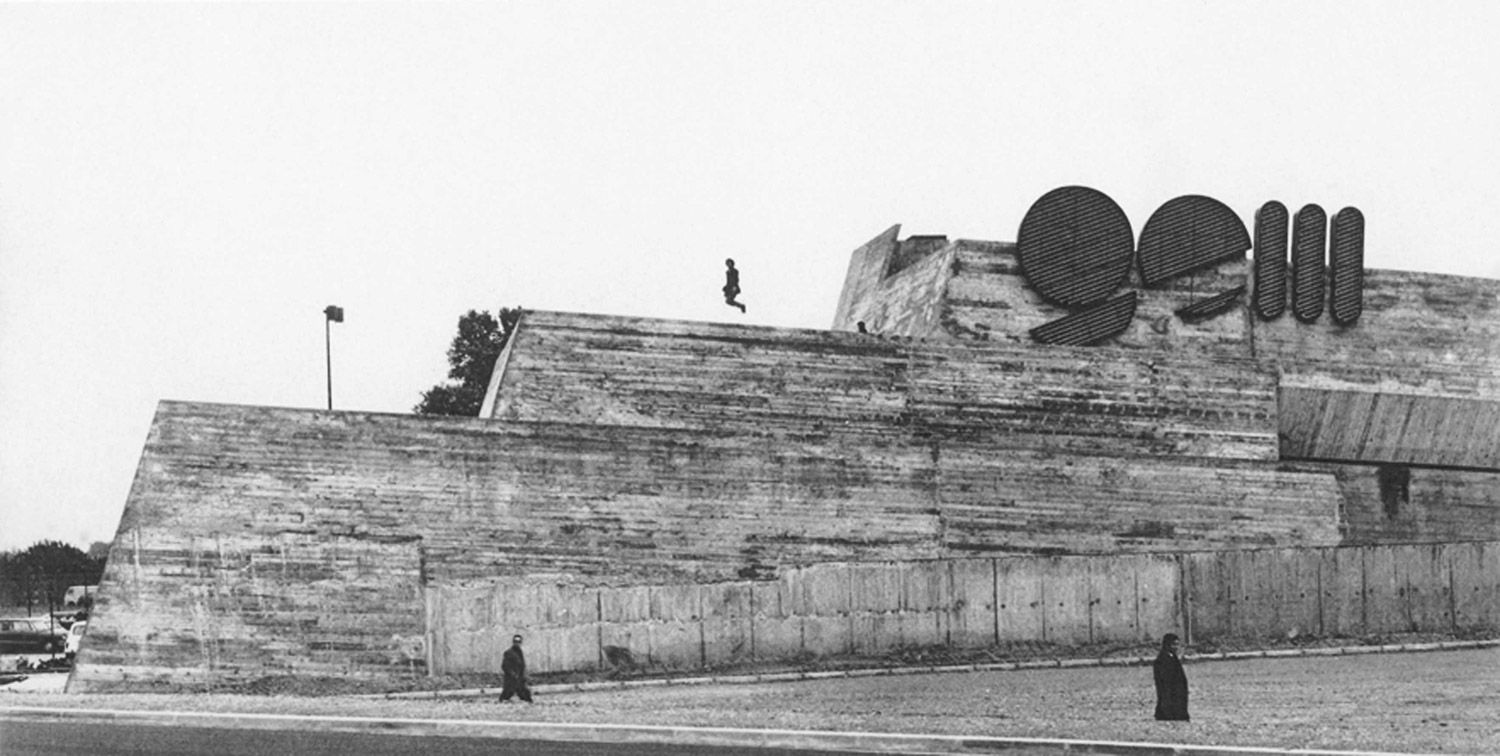The Black Marketeers of the Bahnhof Zoo
|Karl Schlögel

The idea that 1989 came out of thin air speaks volumes about historical insensitivity and limited horizons. The fall of the Berlin Wall was preceded by years of erosion and attrition through the backdoor networks and the resourcefulness of the undisclosed. Historian KARL SCHLÖGEL looks at the molecular movements on the margins of history, which are much more powerful than any deeds of “great men.”
Looking at “historical moments” renders everything else invisible. The brilliant light radiating from such moments blinds or at least desensitizes us to other things that may have happened. One need only look in the newspapers from 1988 and 1989, or leaf through notebooks from the time, to realize just how reductive the heroic image we retroactively constructed for 1989 is. In notebooks, there is no mention of a historic moment but rather scribbled information regarding doctors’ appointments, obligatory talks to attend, parent-teacher evenings. That year, as I recall by consulting diary entries, we were looking for a new apartment and a school for our daughter. Pending royalty payments from publishers and broadcasters are also noted. Birthdays of friends and the flight times of an airline that doesn’t exist anymore – Transworld Airways.
Simplifications and generalizations are unavoidable; we cannot think, let alone live, without them. But it would be wrong to forget that these are simplifications. What does this imply for the historiography of the year 1989? Every historical second is based on infinite premises. There is no historical zero point. As true as it is that there are points of no return, it is also true that every point of no return has its own history, and a long process of accretion precedes every caesura. There are no jumps without a run-up and no collapses come out of the blue; that 1989 came for many “out of the blue” speaks only to the limited horizons, quality of vision, and sensitivities or insensitivities of people of that time. Moments of success aren’t brought about by magic, even if the abundance of puzzling and unexplained aspects incline us to speak of a miracle.
A tone must have been set – but it can’t have been done without preliminary tests. A self-assurance must have developed – in behavior, in the violation of invisible borders – in order to be able to assess even the riskiest situations. People must have developed a sense that something had definitively come to an end, had gone astray, in order to refrain from any further evasions. That’s how many things come together in a surprising moment, and part of succeeding is in fact not being prepared for the success of one’s actions. With regard to writing the history of 1989, this means understanding that there were individual actors but that there were also many more people involved, and without their support there would have been no “historic moment.” It means understanding that entire societies found themselves in a prolonged state of trial and error in which nothing was fictive and everything was a test of strength.
The Moscow–Paris Express
In my memory, it is not the fall of the Wall on November 9 that I connect with the feeling that the old days were over in 1989 – that night, as “crazy” as it was, was just the verification. It was the sanctioning of what had already been decided, beforehand and elsewhere. I connect the end of the epoch with other dates, other places, other people. They do not feature in the most recent master narratives.
A long process of erosion and attrition preceded the fall of the Wall. In my mind this is all tied up with the movement of the East-West Express, also known as the Moscow–Paris Express. Sometime in the second half of the 1980s, this train transformed into a shuttle between Moscow and West Berlin, and the Bahnhof Zoo mutated from an exotic railway station into a grand transfer point in the developing East-West black marketeering scene. Bahnhof Zoo was a West Berlin locus of memory par excellence, the final stop for all the young people wanting to distance themselves from West Germany, for students, for all sorts of traveling people, the last long-distance railway station connecting the island with the rest of the continent, a transit stop for trains with exotic inscriptions: Warszawa-Hoek van Holland-London Victoria Station, Paris-Moskow, Oostende-Leningrad, Aachen-Kiev. It was also the final destination for people who themselves had been derailed, whose story was told by Christiane F in We Children of Bahnhof Zoo. Bahnhof Zoo: ever seedier, a biotope for junkies and prostitutes, a station that a certain type of West Berliner avoided his whole life long.
“Perhaps it’s time to consult Bertolt Brecht’s “Questions of a Reading Worker” once again: Who built it – the new Warsaw, the new Moscow, the new Berlin? Who held the societies together as the state and political order fell out of joint?”
But in the mid-80s something happened to it, not world history, but the sort of molecular movement that world history is made from. Students from the Third World, particularly from Moscow’s Patrice Lumumba University – prospective engineers, agronomists, architects, hydraulic engineers – were using the new freedom to travel, courtesy of their passports and the special status of the “independent unit West Berlin,” to visit the “island” – where not West German but “allied jurisdiction” applied. A “thick description” is needed of this operation, which can only be summoned by impression and memory here. It appears to have been good business, otherwise it would not have happened. Having better possibilities for currency exchange than the Soviet or Polish citizens, in West Berlin, the marketeers stocked up on high-demand products: consumer electronics, fridges, fashion accessories, books. Back in Moscow they could sell the products from West Berlin at a profit. Demand was limitless; one could finance a university degree, maybe even become affluent. On the German end, a bazaar-city arose. From the late 1980s and well into the 90s, the entire stretch from Kantstraße to Neue Kantstraße was transformed into a giant bazaar. There were back-to-back electronics shops; wares were displayed on the pavement. Export-import companies shot out of nowhere, like weeds, servicing an endless stream of buyers between Bahnhof Zoo and Kantstraße. First came the Moscow students from the communist client states – black Africans, Mozambicans, Cubans – and later the Russians themselves, including the “new Russians” with their cafes, real estate, gambling houses, and fashion shops.
West Berlin was rudely shaken out of its island existence. Residents complained that the once quiet Kantstraße had become loud, that they had to clear a path through all the packing cartons and shopping trolleys. The “new” constituted disorder; tabloids played on West Berliners’ old-new fear of insecurity and chaos. A new discourse on criminality emerged. Suddenly, languages were heard on Kantstraße that hadn’t been heard in West Berlin for decades. On the trans-European railway platforms there were scenes that no one had witnessed since the days of refugees: mountains of cartons and luggage that had to be towed to the sleeping car section.
But it wasn’t just about brilliant logistical feats. New routines evolved. New mental maps – Kantstraße, West Berlin as a new address – emerged for the inhabitants of the East Bloc, but this also demanded an adjustment from the insular West Berliners, discovering a world beyond West Berlin and Mallorca. The end of West Berlin as an island manifested itself most strikingly when thousands of Poles transformed the godforsaken, sandy stretch of Potsdamer Platz into a gigantic marketplace. On that day, the new identity of the city hitherto known as West Berlin was born.
All of this was a rehearsal for a new mobility, for a routinization on a massive scale of border crossings that previously had been an adventure for the few. The new era didn’t arrive on the paws of tigers, or even of cats, but almost imperceptibly on the suitcase wheels of the black marketeers. They crossed the Wall before it fell. They drove past the border officials when they were still heavily armed and patrolling the area from the Reichstag ruins to Friedrichstraße station, unaware that the Wall was disintegrating before their eyes. To this day, there is no memorial for the anonymous black marketeers of Patrice Lumumba University at the Zoological Garden railway station. Instead, a freedom memorial is being planned for the exact spot where absolutely nothing happened.
The Clever Women from Kaunas
The dissolution of the Soviet Bloc in the 1980s has many names; national peculiarities and vanities also played a role. But one common feature was certainly the simple disappearance of jurisdictions and responsibilities. An entire class snuck away from its responsibilities. Never before were there so many deserters from power or people profiting from a well-timed resignation. But for “society,” this meant that from one day to the next, individuals were on their own. Institutions were dissolved, careers and life paths were cut off, entire professional disciplines were devalued, families were thrown off track, the old sense of security was revoked.
Changes of this magnitude rarely transpire without panic and hysteria. The post-Cold War societies, to speak rhetorically of a collective subject, have preserved tranquility – reacting with astonishing alertness and prudently making arrangements for the new situation. It was exactly this combination of a new beginning and the cautiously defensive wait-and-see testing of the state powers that made the so-called “transformation” proceed more or less smoothly.
But, oddly, there is rarely any talk of agents of change. Perhaps it’s time to consult Bertolt Brecht’s “Questions of a Reading Worker” once again: Who built it – the new Warsaw, the new Moscow, the new Berlin? Who held the societies together as the state and political order fell out of joint?
“Bahnhof Zoo: ever seedier, a biotope for junkies and prostitutes, a station that a certain type of West Berliner avoided his whole life long.”
There’s no need to undertake a vast archival study, as the “agents” can be recognized with the naked eye – provided one trusts one’s eyes. The time before and shortly after 1989 was full of improvisations, trial actions and tests of how to cope with a situation in which the state had, for some time, no longer played a role. Millions were practicing crisis management, preparing for an emergency in which one could no longer count on help from outside but only on oneself and one’s peers – as a rule, on one’s friends and family. Crisis management was needed – skillful, socially intelligent, groping and yet not backing away from new paths. And a “chaos competence” developed out of this, an advantage which the former residents of the Eastern hemisphere have over their contemporaries in the West, and which, in light of the pending developments in the West, is of no small consequence.
The gurus of the liberal market economy, who imagined themselves in an “experimental and laboratory situation”—when in fact the lives and survival of millions of people were at stake—had more faith in their doctrines than in the social intelligence and crisis management abilities of the millions who had to adapt to a new structure of living. No, those millions didn’t even have a medium for communicating the strength of a society that had to resort to self-organization. In the eyes of the doctrine experts and exporters, what they produced was not worthy of mention, although the question of whether societies would collapse in chaos and despair or catch themselves depended on them. The concepts of Jeffrey Sachs & Co have been forgotten. What remains is the accomplishment of the many who prevented catastrophe.
It is time, finally, for the heroes to return to the stage from which they have been driven by the dramas of men in high places. These heroes form an infinitely large ensemble, from all ranks and classes, consisting of the educated and less qualified, of the old elite and the up-and-coming. They were scattered across Europe. They transferred cars from Rotterdam to the markets of Lodz and Marjampole. They traveled the Minsk-Istanbul route maybe twice a month, stocking up at the bazaar and then going back to Belarus to tend to the business that allowed them to keep their families above water. They boarded planes in Sverdlovsk/Yekaterinburg, heading to Tianjin or Abu Dhabi, and made the connections that helped them get by. By appearances, they seemed to be shopping tourists, but in truth they were on a grand tour, collecting utterly new experiences.
As a result, they became cosmopolitan and worldly – from firsthand experience, not from books. Their motto was “learning by doing.” Their whole lives they had never escaped the “system,” but now they were looking around: students, housewives, members of academies, former officers, fathers, adventurers. From firsthand experience, they learned in one year what others couldn’t even learn in a lifetime. These weren’t vagrants; they were people grounded in real life.
I remember the women on the bus from Kaunas to Warsaw, or, to be more exact: to the stadium in the Praga district that had been transformed into the largest bazaar in Europe, “Jarmark Europa.” They made the trip twice a week. Almost all of them knew each other. They knew the procedures and tricks for getting over the border, which of course meant they had to leave a little something for the border officials. They were old hands, and it was hard to unnerve them. This is how amber made its way by the kilo from the Baltic republics to the bazaars and streets of Central and Western Europe – contributing to the stabilization of thousands of precarious households.
“The gurus of the liberal market economy, who imagined themselves in an “experimental and laboratory situation”—when in fact the lives and survival of millions of people were at stake—had more faith in their doctrines than in the social intelligence and crisis management abilities of the millions who had to adapt to a new structure of living.”
But this shuttle economy was more than just an economy: it was about entrepreneurial initiative, mobility, organizational talent, and becoming familiar with the outside world. One could meet these marketeering people on any route in Europe in the late 1980s and early 90s, at border crossings, at harbors. Soon, trickles turned into streams and quick visits turned into long-term footholds. It was the ingenuity and perseverance of the women of Kaunas and other places that held together a continent that, politically and economically, was falling apart; it preserved a connectedness that precluded total collapse. In retrospect, there’s no reason whatsoever for giving others the credit that they, the silent heroes, deserve. They were the ones who dealt with the hardships of daily life, not their “representatives.”
A Charlemagne Prize for Eurolines
The grand moments with which history usually preoccupies itself are inconceivable without the molecular events that make them possible. And the Europeans who make a career out of standing and speaking for Europe are nothing at all without the unknown Europeans whose stories are never told. We all know the stages of Brussels, Strasbourg, Paris, or Maastricht, upon which “Europe’s representatives” play their parts. It’s not enough that we’re kept up to date on all of their entrances and declarations. It’s always the same names, the same faces, the same gestures. In 1949, a group of townspeople from Aachen – Europeans of the first hour – created the Charlemagne Prize for “persons who have advanced the ideas of European understanding in political, economic, and spiritual relations.”
In the list of those honored since 1950, one more or less finds all the great Europeans, from Count Coudenhove-Kalergi to Vaclav Havel, from Jean Monnet to the euro. One can extrapolate this line and list easily and without a great deal of imagination. But one could also award the prize to the people who were indispensable to the Europe that has evolved since 1989. There are more than a few claimants: the transportation ministers and engineers who built the bridges, streets, and rails that paved the way to a new Europe and brought Europeans closer to one another. The shippers and logistics experts who have made careers out of shortening distances and creating a sense of proximity should also be eligible. Nor should one leave out the transportation companies and founders of discount airlines who have radically altered the map of Europe in our heads. Now, we not only know where Palermo is, but also Tallinn; not only Lisbon, but also Riga and Odessa. They have established lines of transit between the Rhein-Main area and Galicia, between Warsaw and the English Midlands, between Lviv and Naples. The discount airlines have made Berlin a neighbor of Moscow and contributed to an increase in cosmopolitanism. Krakow now has a connection to Dublin.
Entire economies can no longer function without this flow of traffic. The renovation of apartments, the care for pensioners and for the infirm in cities – even those located far from the border – now lie in the hands of personnel crossing over our borders. The Aachen Prize Committee could easily get an idea of candidate eligibility by looking at their timetables, price lists, and bookkeeping methods. They would determine that there’s not a place in Europe that can’t be looked up. Every act of research would become a joyous virtual journey to the New Europe. But the job of a firm like Eurolines has nothing to do with fantasy journeys and everything to do with travel in a Europe that is real. Eurolines has been at it for many years, day after day, night after night, in an unexcited and unspectacular routine and with reliability independent of political votes, electoral campaigns, and legislative periods: transnational, European, in millions of molecular movements. It is the electric current that keeps Europe’s motor in motion. Few previous recipients of the prize can make that claim with more justification than, for example, the Eurolines coach company.
Credits
- Text: Karl Schlögel


